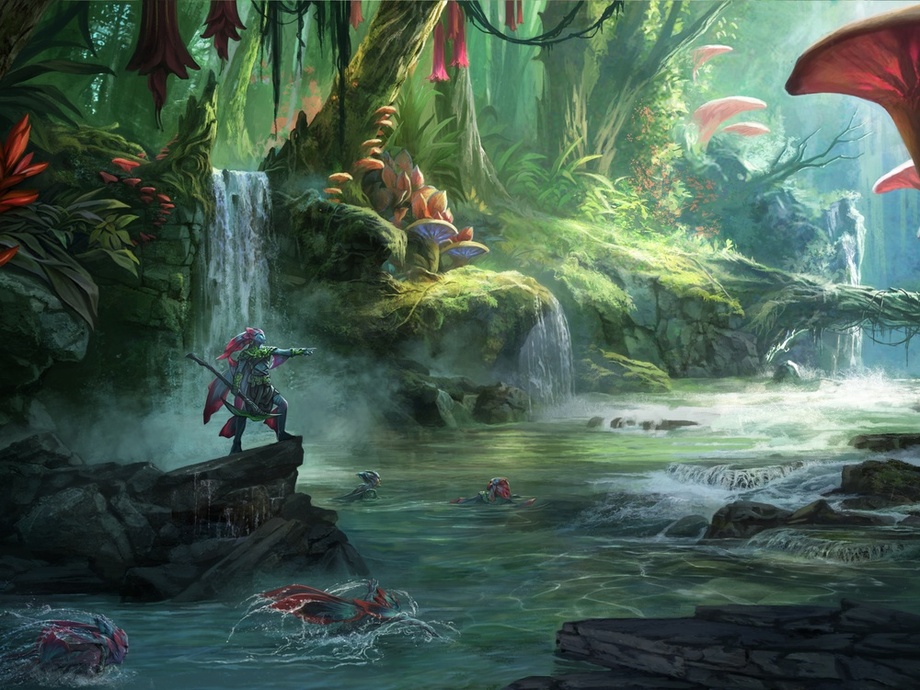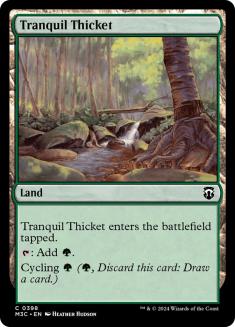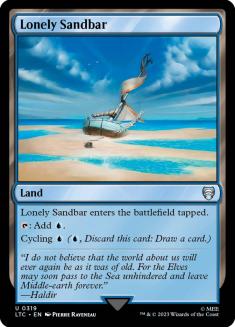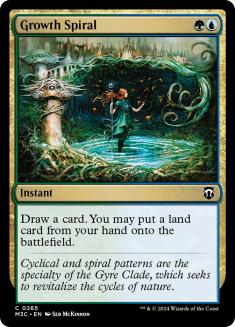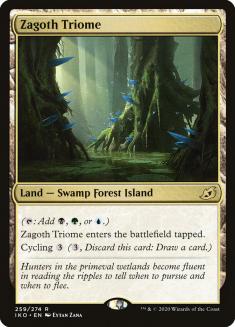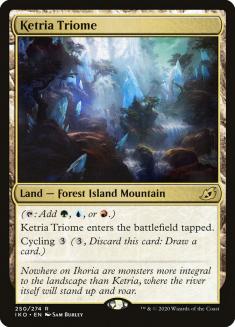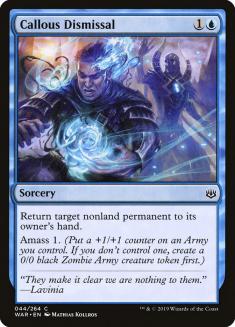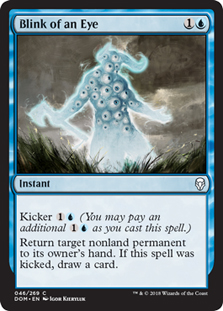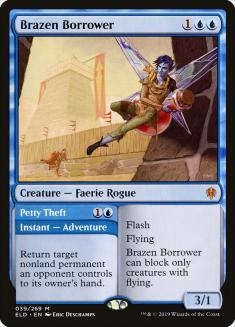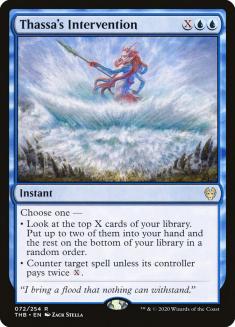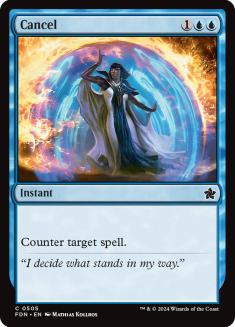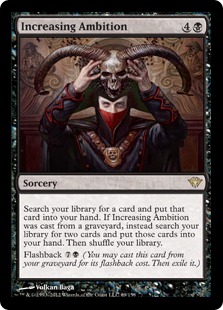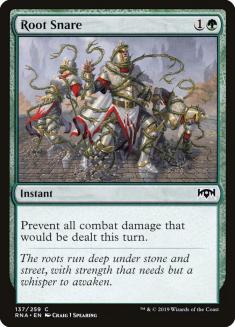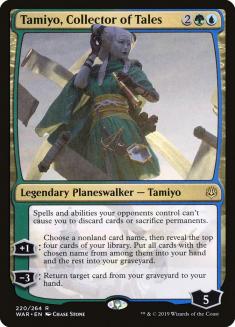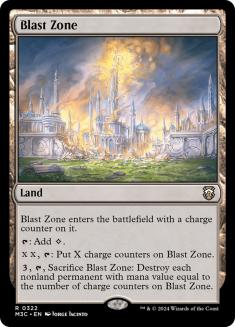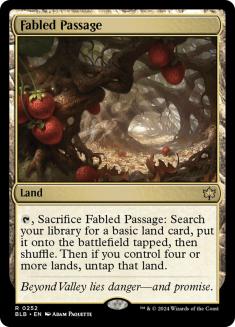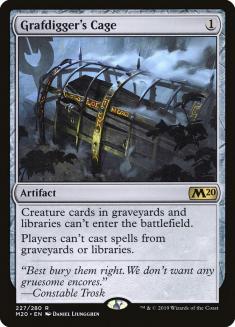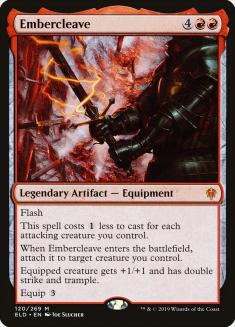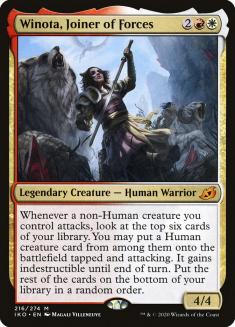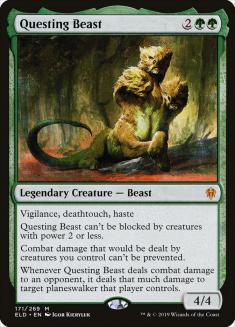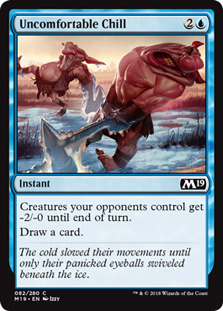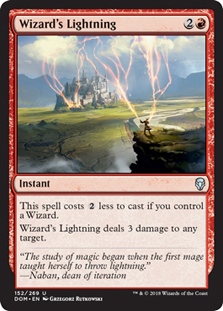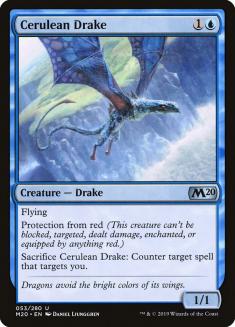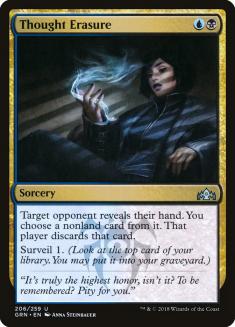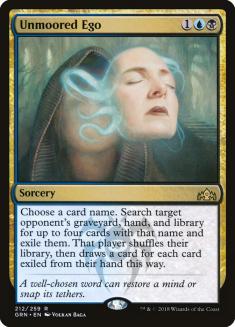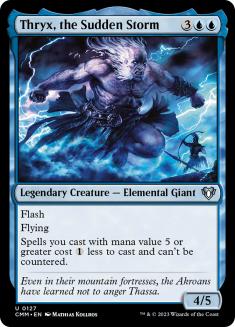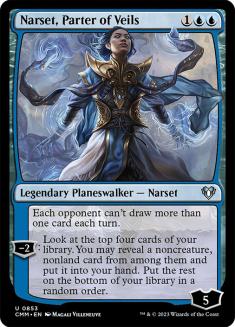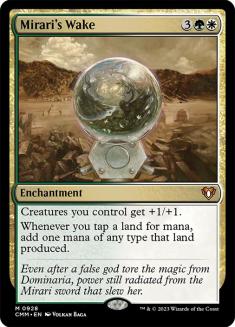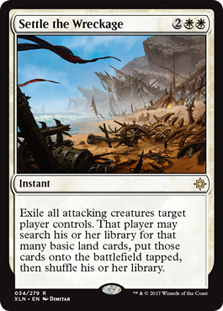Infinite everything: Blast Zones, bounce spells, turns, card draw, cards in library, attack steps, life, you name it. That’s the power of Nexus, baby.
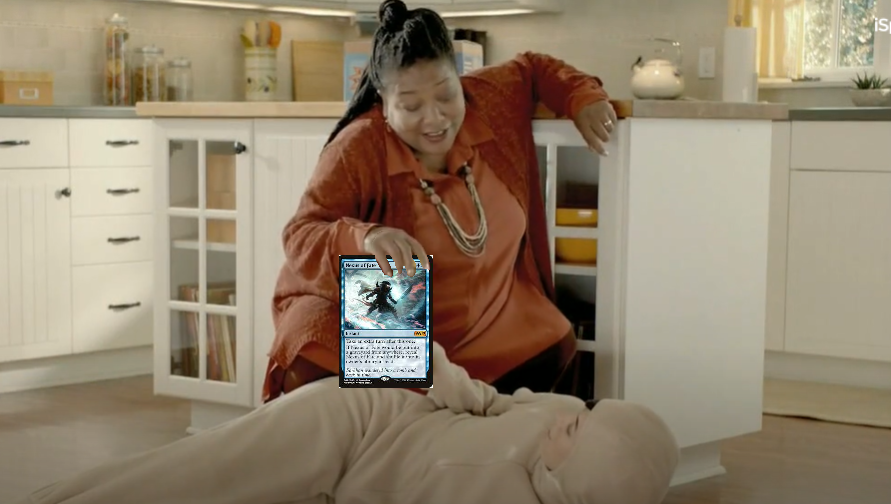
Nexus of Fate was removed from Pioneer a long time ago, but with the uptick in Historic lately, it’s a great time to get to tuning the most infamous combo deck of the last few years.
So, to go ahead and get this out of the way for the decklist crowd, here’s the 75:
Creatures (2)
Planeswalkers (3)
Lands (29)
Spells (26)

Construction
There are a lot of ways that people are building the deck right now, and as it stands, I’m confident that the configuration I have for my maindeck is the closest to correct.
The first thing to understand about Simic Nexus is that it’s a high-resource combo deck. That means that it needs a higher raw quantity of cardboard in order to actually “go off,” as casting Nexus of Fate and taking the necessary steps to find more copies of Nexus is incredibly mana-intensive. Other than Wilderness Reclamation, not much efficiently produces multiple mana for a single card, which means that simply making land drops will be the best way to reliably implement Nexus loops.
With both Search for Azcanta and Uro, Titan of Nature’s Wrath in the deck, having a density of cards that quickly fill the graveyard is a must. The exact split on these cards is a bit fuzzy, but I wouldn’t play the deck with fewer than five single-mana cantrips. Including cards like Lonely Sandbar and Tranquil Thicket has the benefit of padding the land count of the deck without skimping on its virtual spell density.
The importance of that land count is emphasized when playing Growth Spiral and Uro. If the plan is to end up with a pile of mana sources on the battlefield, the tapland // Reach Through Mists split cards are a fantastic fit.
The Triomes aren’t making the cut, despite being three-color lands with cycling, simply because of how much it costs to cycle them. Simic Nexus is an incredibly mana-hungry deck, which means that it’ll generally be great at spending all of its mana every turn, magnifying the inefficiency of their cycling costs.
There’s a straightforward knee-jerk reaction to assume that Uro, Titan of Nature’s Wrath and Search for Azcanta form a colossal nonbo and a sign of bad deckbuilding. That shifts when considering that Uro is closer to a Growth Spiral that doubles as a kill condition in the late-game.
In other words, Uro won’t usually be eating Azcanta food until after Search for Azcanta has already transformed. It does happen occasionally, however, which is part of what makes Uro the best kill condition in the deck.
In Standard, Callous Dismissal was the most popular Simic Nexus kill condition because it was a way to win the game that didn’t actually take up any real estate in the maindeck. This is important because Simic Nexus is ultimately an engine combo deck, and spending a draw step on something that’s exclusively a kill condition, like Carnage Tyrant or Thassa’s Oracle, could end up causing the Simic Nexus player to fizzle and die.
In linear combo decks, having cards that can serve as many combo-related purposes is huge, and Uro checks a ton of boxes. Most specifically it isn’t a “dead end” in terms of card filtering and develops more mana to the battlefield on its front half.
The fact that Uro has text after being a Growth Spiral means that it can help the deck when it would otherwise be operating in a fail state. Having a card that can work in so many ways, while also being the tool to end the game, is what gives Uro the nod over other ways of winning the game.
There’s a bit of division among Nexus players on the better bounce spell to play. I’ve arrived at Blink of an Eye for one key reason: it can save permanents from removal spells.
Brazen Borrower’s Petty Theft isn’t great at rescuing cards from Elspeth Conquers Death, Maelstrom Pulse, or anything else in that vein. The biggest check in Borrower’s favor is that it’s a reasonable way to pressure Teferi, Time Raveler, but even there, it’s fairly unexciting.
Thassa’s Intervention is the biggest pickup that Historic has gifted to an old Standard deck. Imagine a split card that was all of the following:
Playing it would be a no-brainer, right?
Thassa’s Intervention fits in beautifully with any deck that plays Wilderness Reclamation, and it serving as an interactive tool in a pinch is what puts it over the top of cards like Chemister’s Insight and Drawn from Dreams.
With Ikoria Standard Temur Reclamation jamming Thassa’s Intervention with Reclamation, it doesn’t feel like much else really needs to be said here.
One play pattern worth mentioning is that using Thassa’s Intervention as Inspiration does come up frequently, as velocity is the name of the game with this deck. The cards are redundant enough that, outside of the phase of the game where it’s Nexus or bust, simply increasing the raw resources available to you is a fine use of an Intervention.
The number of Root Snare to include in the deck is somewhat flexible. Never go lower than two, but you should be really positive to have fewer than three. It’s going to be dead, or not impactful enough, in a fair chunk of matchups, but it being actual, factual Time Walk against creature decks makes it worth it.
Tamiyo, Collector of Tales using her -3 to rebuy Root Snare is a line that comes up frequently against aggressive strategies and does a ton of work to bridge the gap from the end of the early-game to actually winning.
A great catch-all for hate cards that’s difficult to interact with. Three may be a bit high, but with almost half the deck being mana sources, it plays well in the “pile of lands that are also spells” angle.
One of the deckbuilding squeezes of Simic Nexus is fitting enough basics for Fabled Passage on top of all the utility lands. Simply put: Fabled Passage has all the benefits of traditional fetchlands with Search for Azcanta and Uro, Titan of Nature’s Wrath with very little downside. Having ways to fill the graveyard is a big deal, and playing fewer than four Fabled Passage is a mistake.
The Sideboard
The exact composition of the sideboard is in near-constant flux. That’s mostly on the back of the fact that Historic has just experienced a huge shakeup on the back of the most recent Historic Anthology, and people are becoming more invested in the format than they were previously. That’s going to cause dramatic shifts in what decks exist, are prevalent, and need to be prepared for.
Rather than delving too hard into justifying the specific sideboard configuration that I have right now, it seems more fruitful to explain which cards are for which matchups in the interest of giving a better idea of what’s important.
Primarily for the various Lukka and Winota decks that are running around. Both of those decks are strategies where their fairer draws aren’t difficult for Nexus of Fate to overpower, but things can get hairy when they do their more busted stuff. That makes it easier to justify investing cards into turning off narrow portions of their strategy.
The biggest downside is that Grafdigger’s Cage turns off Uro, but Blink of an Eye can fix that once it comes time to put the final nail in the coffin.
Aether Gust is mostly being used to attack specific power plays from decks:
I’ve gone as high as four copies of Aether Gust, but the matchups it works well against can be a bit tough if too many copies of Aether Gust are drawn. That’s because it’s ultimately just denying a single resource from the opponent, at the cost of a resource from Simic Nexus.
That exchange can really only occur once or twice in a game for Simic Nexus to still have the requisite number of resources to go off before dying. That’s because every time Aether Gust resolves, the rest of the opponent’s turn is still happening.
Against something like Jeskai Lukka, that isn’t an enormous deal because of how big and clunky their spells are. Against something like Mono-Red Aggro or Naya Winota, that equates to still taking a bunch of damage to the chin.
Sideboard Uncomfortable Chill over the fourth Root Snare. Why? Two reasons, both related to matchup-specific play patterns, the first of which is related to mulliganing.
In a good number of aggressive matchups, simply leaning into Root Snares isn’t a long-term strategy but a way to buy time. These matchups demand Simic Nexus do as much as it can to have a proactive gameplan. That means aggressively mulliganing to Growth Spiral and faster Wilderness Reclamation kills.
When mulliganing, the resources invested into interaction are felt much more than they would be otherwise. Uncomfortable Chill replacing itself while serving as a lifegain spell makes it play in these games without reducing the total amount of cardboard the Simic Nexus pilot has to work with. At the end of the day, Root Snare will be worth more life, but drawing too many of them makes the game harder to actually win.
The second, and more card-specific reason, that hedging between Uncomfortable Chill and Root Snare is worth it comes down to one card:
Bonecrusher Giant’s Stomp countering Root Snare makes Fogs a scary basket to put all of our eggs in. The fact that Root Snares are at their best against decks that are already interested in including Bonecrusher Giant necessitates finding a way to come close to that effect, while actually diversifying the method it uses to do it.
If the format becomes optimized to a point that the third mana makes Uncomfortable Chill untenable, Hampering Snare could occupy a similar space for the Bonecrusher Giant / Questing Beast reason mentioned here.
In that same vein of “lifegain, but different” is Cerulean Drake. It’s mostly here for Mono-Red Aggro, just to bridge to the fifth and sixth turns of the game.
Another place I’ve found use for Cerulean Drake is against the Sultai decks that primarily plan on interacting via hand disruption and Unmoored Ego. Cerulean Drake’s activated ability stops more than red spells, and this line of thinking is similar to Grafdigger’s Cage. The matchups that lean into Unmoored Ego and the like are matchups that struggle against Simic Nexus, and don’t have any other reasonable way to win.
Having ways to cover those bases is a justifiable use of space. The biggest draw to this over something like Negate is that Cerulean Drake can be deployed at times that the opponent doesn’t have Mystical Dispute up. People aren’t exactly leaving in their black removal against Simic Nexus, and simplying having a Siren Stormtamer can change the outcome of a game depending on how invested in Unmoored Ego the opponent is.
Really just lumping these two together as they’re the same anti-blue catch-alls they’ve always been. The matchups that involve a ton of interaction are the ones where it is more justifiable to shave on some quantity of ramp (specifically Growth Spiral).
The reason for this is that the games come down to finagling to a position where Search for Azcanta or Tamiyo will simply bury the opponent, rather than trying to ramp out a fast Nexus kill. This frequently involves some amount of interaction in order to turn off the opponent’s snowball-y threats such as Teferi, Time Raveler.
I’d be shocked if there were an iteration of Historic any time soon that didn’t involve a combination of five or more counterspells out of the sideboard to fight the blue fights.
Thryx is a bit more on the experimental side at this point, but the theory is that it immediately necessitates a counterspell, pushes the rest of the gameplan, and can be a threat in matchups where threat density is an issue. The biggest strike against Thryx is that it can be countered by Mystical Dispute. On the other hand, in slower matches, Mystical Dispute’s efficacy is drastically reduced by virtue of Simic Nexus being a deck that’s roughly 50% lands. Thryx being a way to adequately pressure planeswalkers and turn off both Negate and Dovin’s Veto is a big game.
The biggest question is how necessary those roles are to play. A good chunk of Simic Nexus pilots have some quantity of Shifting Ceratops, but counterspell matchups being favorable makes it harder to justify having too many cards with the text box.
Great in the mirror and against anything trying to use a pile of cantrips. Narset allows the deck to adopt a more resilient, controlling posture. Simply having a draw spell that also acts as an interactive piece plays beautifully into the same space as Uro — a powerful card that doesn’t actually get in the way of comboing.
She isn’t in the maindeck because she can’t find lands and doesn’t play particularly well when the deck wants to invest its mana into the battlefield. When the games are longer and lands enter the battlefield more naturally, she’s a better fit.
Cards to Avoid
In the making of this deck, I’ve played a few dozen matches with other cards that stuck out as possibly working, but that I ended up hating.
Mirari’s Wake was the first card that stuck out as a way to emulate Wilderness Reclamation. I played Nissa, Who Shakes the World as another mana doubler in Standard, and Wake both generates more mana and is harder to interact with. The problem?
Five is a lot of mana to invest without immediately getting anything.
Part of what makes Wilderness Reclamation and Nissa, Who Shakes the World so strong is that they both allow their controllers to do something the same turn that they’re cast on-curve. Mirari’s Wake doesn’t allow for that. That means that it demands either taking an entire turn off or secretly costing more mana in order to utilize the mana it produces during the same turn cycle. That’s a steep cost in a format that’s becoming more efficient by the day.
Settle the Wreckage and Wilderness Reclamation should be like peanut butter and jelly. They play well on-curve with one another, and Settle the Wreckage is like the world’s most powerful Root Snare.
Unfortunately, supporting Settle the Wreckage makes the mana much worse, warranting more multicolor and fewer cycling lands, and also hurting Fabled Passage. Couple that with the fact that it is much worse than Root Snare when there isn’t a Wilderness Reclamation on the table, and the upside just wasn’t there. The number of creatures the opponent has doesn’t really matter, and interacting on the level of sweepers just isn’t as necessary as Magic heuristics would lead us to believe.
You have to get a ton of value off Omens and the like to justify gutting the consistency of a deck that wants to churn through its entire library and find the same card over and over. Don’t fall for it.
It’s possible there’s a grindy version of the deck that wants Yorion, but Simic’s combo-oriented iteration ain’t it.
Open Season
Other than those cards, it really feels like most things are on the table for Simic Nexus. Depending on how things shake out, what decks people play, and which countermeasures they bring to the table, just about any reasonable piece of tech is in bounds for Simic Nexus.

I’ll just be saying my daily prayers to the Magic gods that Nexus of Fate doesn’t get banned on Monday.

